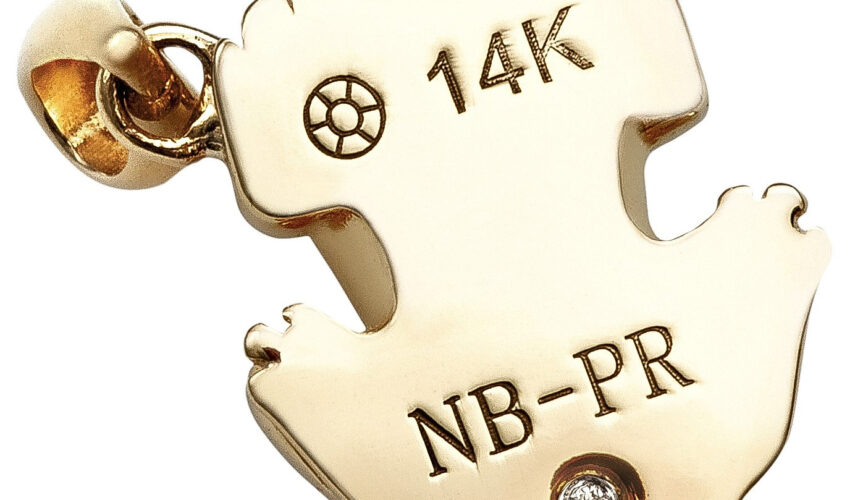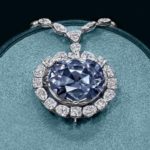Things we’ll discuss related to high quality jewelry and metal types:
- Debunking the myth: why 950 sterling silver and 24k gold aren’t always better options
- Debunking the myth: solid sterling silver does not tarnish
- Why buying silver can be worth it with proper care
- What to avoid when buying jewelry
- The pros and cons of plated jewelry
- Brands’ influence on jewelry

If you tend to be on top of what happens with markets of luxury brands and goods, a prominent example of why purchasing high-quality jewelry is worth it is Rolex. Currently, the demand for Rolex watches is so high, sellers are low, if not out of stock, of the brand’s most famous and exclusive designs. Moreover, the resell market can get up to 7-8 times higher in value for even used Rolex watches. For example, some Rolex watches previously valued at 10k are placed in the market (and being bought) for a whopping 70-80k. While pandemic-related market fluctuations have been a driving force in this hunt for fine goods, art, and luxury jewelry, a universal truth is that, no matter the times, quality jewelry is always a good purchase and investment. Jewelry can become family heirlooms that over time gain more value or can become a type of currency if you’re looking to make liquid that type of asset. Quality jewelry is, essentially, more durable (because precious gems and metals withstand corrosion better) and more valuable (because brands and exclusive designs are a big factor in determining price).

Myth: 950 or higher silver and 24k gold is better
As mentioned above, precious metals and gems have an increased ability to withstand corrosion over time versus other base metals. Hence, one of the reasons why they are regarded as precious in addition to their rarity. The higher the grade of the metal (24k gold or 950 silver) the purer and more valuable the metal is. For long-lasting pieces this characteristic, however, might not be your top choice. Very important to note! There are durability downsides to having such pure metal grades. Silver is already a very ductile and malleable metal, therefore, the purer the piece is 950 or 999, the softer it becomes! There are retailers that market their pieces as 950 or higher which, in reality, does not make the piece more durable. When it comes to silver, the perfect and expert manner in which fine jewelry is made is with a 925 fraction of silver and the remaining fraction another alloy. The additional alloy allows to create the ideal durability for silver to be worked in jewelry and withstand the most corrosion, scratches and dents. The same exact concept is applied to gold. 24k gold is extremely malleable, it can bend very easily. So, while the purity is great in terms of value, it might not be the best grade to work with for jewelry and other fine crafts.

Myth: Sterling Silver .925 does not tarnish
As a designer and seller of sterling silver .925, I speak with a number of clients that have the misconception (albeit, unintentional) that if it is sterling silver .925 it will not tarnish. To preface why this is inaccurate information, even the paramount brand of luxury jewelry in the US, Tiffany and Co., has an entire page on their website dedicated to why silver tarnishes and the required upkeep for sterling silver .925 pieces. That being said, the interesting part to note is that the grade offered by sterling silver (.925) is widely considered as the “best” due to its enhanced tarnish-resistance and exceptional hardness. Anything above that is too pure to the point it actually can tarnish even quicker than .925. Now, for upkeep, silver and really for all types of jewelry (even non-precious types) proper conservation stored in a dry place is key so pieces can last longer with their original brilliance. As mentioned by Tiffany and Co., avoid the following:
• Household and outdoor chores
• Showering, bathing or swimming in pools, hot tubs, hot springs and the ocean
• Using lotion, hair products, fragrances and other cosmetics
• Exercising at the gym or during contact sports
• Preparing meals

Why should I still buy silver then?
The simple answer is, because it is a precious metal market that, if resold or refined, will give you some type of money. Because of its given value, silver pieces can also become precious items for family and friends to have forever.

Avoid high-in-copper pieces
Ever wonder why you take off certain jewelry pieces and your skin turns green? This is a chemical reaction that occurs called oxidation when copper gets into contact with water or other chemicals. This is another reason why having high-grade metals is best, it is less likely to oxidize. Not only will your hand turn green, but as a low-quality item it will also become tarnished, green, or look overall deteriorated. This oxidation is also the reason why jewelry made from other base metals and materials deteriorate a lot quicker.
I have items that never change color or corrode!
With this, please be mindful that there is amazing jewelry made from more durable materials that will excel at not corroding or changing color. The key factor here is, however, they will not be considered very valuable pieces because they are not made from precious metals or gems.

The Pros and Cons of Plated Jewelry
A very, very big industry, spearheaded by the largest jewelry retailer in the world, Pandora, is plated jewelry. This means that a fine coating of gold (yellow, white, rose) be it in 10k, 12k, 14k, 18k and so on, is placed over a jewelry piece. Pandora is mentioned because they specialize in sterling silver .925 and coat them with rose gold to create their signature pink pieces.
Now, the pro of plated jewelry is that you can have a desired color (yellow, rose, white) at a lower cost because the item is not completely solid. Additionally, it is still a more valuable item than a non-precious metal jewelry piece.

The con, however, is that gold plated jewelry, over time, can chip or slowly loose color and reveal the “underbelly” of your piece. If the item was made from sterling silver .925, it is still a great piece to own that then you can refurbish with a new coating of gold. If the item was made from copper and coated in gold, it is definitely not a piece considered to be high-quality, just quality-finished. To finish with this section, be on the lookout on marketing campaigns and descriptions that say, for example, 14K, but don’t explain whether it is plated or solid. This tactic can be very misleading. A tell-tale is that, if the price seems uncharacteristically low, the piece is probably plated or being resold. If you really want to be sure, contact the seller for more information. The other side of the coin is that prices can also be extremely inflated just because they are bathed in, let’s say, 24k gold. To that I say, save up for a completely solid piece!

The Brand Factor
“The brand factor” means that value can skyrocket, even beyond the base value of a metal or gem, just because it is a luxury brand name and design. As mentioned earlier, Tiffany and Co. is the paragon of quality jewelry. They have established trust due to their high-quality consistency in jewelry making. While other, lesser-known jewelry businesses can be just as reliable with their high-standards, it is important to verify their track record and customer reviews. Exclusivity, thus, becomes another major factor. A jewelry brand might not have the fame Tiffany and Co. does, but if they have unique designs that aren’t sold widely, those pieces can also become luxury commodities. In those instances, the quality and value of the jewelry is also defined by the limited access to those pieces. This is the reason why the intersection between precious metals/gems and brands is so important in also determining quality. While there used to be a time when the weight and purity of a precious metal was the precedent for setting prices, we now see that designs themselves are given much value. To summarize, this is why a Tiffany and Co. sterling silver bracelet can cost up to $5,000. The assigned quality is not only drawn from the silver itself, but also the fact you cannot find that particular design anywhere else.
Summarization of Choosing Quality Jewlery
- Precious metals and gems have long-term value
- Branded jewelry in precious metals and with precious gems tend to be the most valuable
- The durability and quality of luxury jewelry can become family heirlooms
- Avoid high-in-copper jewelry
- Avoid non-precious jewelry if you’re looking for long-term resale value
- Avoid purchasing items that are plated or low-grade in metal quality if durability is key for you
- High-end jewelry needs to be preserved appropriately – store in dry spaces and don’t expose it unnecessarily to water and other chemicals.
¡Salud y Éxito!
Daniela
Updated by Daniela on Nocember 2, 2022
Daniela Barquet is the 4th generation owner of her family's jewelry store located in Old San Juan, Puerto Rico since 1965. The business tradition was started by her great-grandfather, Issac Barquet, in 1920. Daniela graduated from Boston University with a Bachelor's in the History of Art and Architecture and a Minor in Italian Studies. Daniela continues to grow under the mentorship of her father, Natalio Barquet Perez, who is a renowned, certified jeweler in Puerto Rico.






